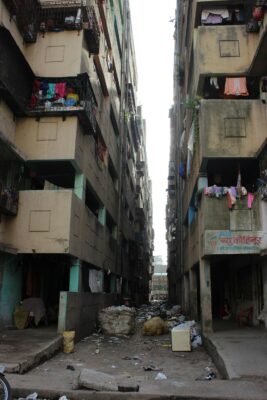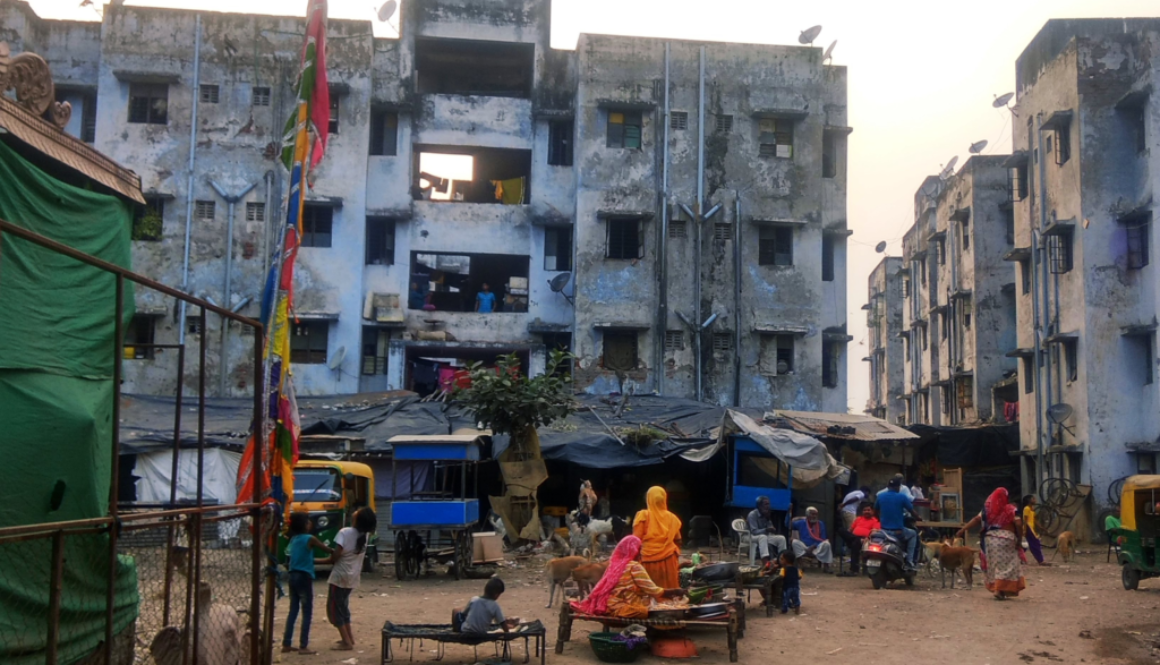Rehabilitation and relocation in Mumbai and Ahmedabad
By Vinodkumar Rao and Smruti Jukur with the support of SPARC
Nearly half of Mumbai lives in slums, some on uninhabitable lands – within an arm’s length of speeding trains or on pavements with their living overflowing on to the adjacent street. The state Government of Maharashtra (where Mumbai is situated) has made a lot of effort to house slum dwellers by bridging the housing gap in different ways.
For many slum dwellers, state relocation programmes are probably the only gateway to moving out of dangerous living conditions. But are they happier after moving out? Do their lives improve? Do their aspirations change? Do their perceptions about life change?
Too many questions, and we hope ARISE answers them.
Accountability
We want to explore answers to these questions through ARISE because ‘accountability’, which is the core theme of ARISE, is an important element of this conundrum. We need to look at accountability at many levels. Accountability of different government agencies to people before, during and after relocation; accountability of formal and informal power structures within relocated communities; and accountability of people to government agencies.
We will examine two case studies through this lens, one in the city of Mumbai and one in Ahmedabad. Both are mega cities with strong Municipal bodies. They are capitals of their states and are both major contributors to state revenues. But they also have large numbers of families living in informal settlements. Both cities have, over time, relocated several slum dwelling communities who were living on uninhabitable lands (or lands acquired for public projects) to multi-storied buildings. But the way this relocation was handled presents very different styles as well as different relationships between people and those in power. In fact, they stand quite opposed to each other!
Mumbai

Mumbai made a political promise to house slum dwellers, an opportunity that was used by organised slum dwellers to their advantage. They demanded that state institutions pay for housing slum dwellers displaced by infrastructure projects (also inherently addressing the issue of people living on precarious lands, such as along the railway tracks or on pavements). People voluntarily moved into buildings, sometimes further away from their original locations. This was thanks to the work of organised slum dwellers federations and a government agency that invests in building robust rehabilitation and resettlement (R&R) processes beyond construction.
There is a specific cell in the state agency responsible for R&R, headed by a competent authority with fair decision making powers. It facilitates, oversees and finances the work, ensuring people’s movement into relocated colonies is smooth and that they are provided adequate post movement support until they settle into their new surroundings. Investments are also made in setting up and supporting cooperative societies that are given official powers to regulate and oversee the maintenance of the buildings. This is all thanks to a robust R&R policy, that was developed for an important infrastructure project. It continued to serve as a template for further projects that required the relocation of slum dwellers.
Ahmedabad
In contrast, the projects in the city of Ahmedabad have no such policy frameworks or any specific cell within state agencies to facilitate the process of relocation. Most relocations do not indicate any willful movement of affected slum dwellers. There is minimal post-relocation support. In comparison to the situation in Mumbai, where people are very vocal with elected representatives and government officials, the relocated dwellers in Ahmedabad seem politically disenfranchised. There is little interest in strengthening any local processes and a general sense of hopelessness prevails among residents and organisations who have worked at these sites.
After relocation
In spite of the contrasts in the two cities, specifically in relation to accountability, their post-relocation challenges are similar. In fact, the issues that relocated slum dwellers face seem to have a pattern across cities in India. These include, little understanding of forming formal cooperative structures, poor management of garbage, issues with access to basic services, transportation access, and many others that point to poor maintenance.
So far, all studies indicate that investing in systems of participatory action is crucial to addressing the issue of housing the poor. This is essential and a no-brainer approach to ensure sustainable housing. But, as people get access to housing or secure tenure, new sets of challenges emerge. This is a fairly new area that is not debated much, but which deserves attention.
Questions for the future
Most dense cities house slum dwellers on lands that are uninhabitable and sometimes outright dangerous for those living on them. Building safe habitats for slum dwellers essentially means resettling elsewhere or stacking houses up vertically. Therefore, the need to explore what methods can improve the living conditions of residents’ post-movement into relocation sites becomes imperative and urgent.
ARISE gives us the opportunity to look deeper into many aspects of relocation. The governance structures, political relationships, organisation of residents, and other determinants need further investigation. As this is also the formalisation of informal tenure, formal accountability structures actually develop during this period and it is essential to understand them. After all, how one lives and how one feels about their living arrangements has direct bearing on one’s health and wellbeing!
Common knowledge says “pakka makan” (a formal and strong house) got most people to move. But did they get what they came for?
